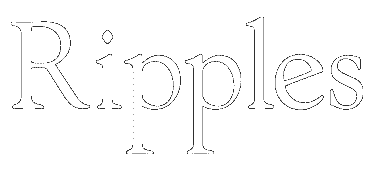How to: Choose a WC for your bathroom, cloakroom or ensuite
Selecting a new or replacement WC offers the option of replacing like for like or swapping it for something completely different. To help you decide which way to go, we asked Chris, Senior Designer from Ripples Bristol, to share his helpful hints and expert advice.
While it may not be the most glamorous of shopping lists, buying a new loo is something that needs careful consideration to ensure you’re getting the right style, design and shape for your scheme. And now, with water-saving features and high-tech designs that can do all manner of things, the options have really opened up. Our guide on how to choose a WC gives you a helpful starting point with hints and tips to help you find your perfect match.
Style and colour
There are three main styles of WC to choose from and if you’re simply updating the bathroom with new sanitaryware then it’s quicker and easier to replace like for like. If, however, you’re totally revamping the space then it creates the perfect opportunity to change it up for something new.
The most popular is the close coupled WC where the pan and cistern are connected in one compact unit with both classic and modern designs to choose from. Another option is back to wall, which is fixed to the floor just like the close coupled but the cistern and pipes are hidden behind a furniture unit, stud or false wall. A back to wall furniture unit can then be matched to a co-ordinating vanity unit and other storage for a cohesive look. The third option is the wall hung WC, which is securely hung on the wall without the need for a pedestal. This means you can install the WC at a height that suits you and your household and it’s much easier to clean around.
Colour-wise, white is the go-to to match the basin, creating a clean and crisp look. If you’re after something different, there are WCs in a variety of colours such as cappuccino, matt grey, matt blue and even black
Space savers
If you’re struggling with a small bathroom, cloakroom or ensuite then a wall hung WC is the perfect choice. As the pan securely ‘floats’ off the floor, it creates the illusion of space, as you can see all of the flooring underneath. This has the added advantage of making it easier to clean the bathroom, too.
The way it’s hung is by being bolted to a steel frame with the cistern concealed inside. The frame and cistern are then hidden behind a false or stud wall or a WC furniture unit, which can be a feature in itself in a colour or finish to co-ordinate with the rest of your bathroom design. You can then choose something really swish and smart for the flush plate on show.
You can also find corner compact close coupled WCs for a really tight space as well as combined two-in-one toilet and basin designs. They’re not everyone’s cup of tea but they certainly save stacks of space.
Latest technology
If you want an all-singing, all-dancing design, shower toilets are the latest trend and these multifunctional WCs are fast becoming a huge hit with our customers. A cross between a loo and a bidet, they include integrated washing and rear wash features as well as optional extras for that added touch of luxury such as a heated seat and cover, adjustable shower jets, blow dry function and remote control.
Another advancement in WC design is the vortex flush, which combines a silent yet powerful flush with a super-efficient use of water. Replicating a swirling water vortex, it hygienically cleans the entire bowl without using too much water or splashing all over your floor.
Sustainable solutions
As the cost of living continues, we’re all looking to save money on our utility bills as well as doing our bit for the environment. For a water-saving WC, the vortex flush we mention above uses the power of a vortex flush rather than the unnecessary use of too much water.
Another option is to choose a dual flush model, where a sort flush uses around 3 litres of water and a long flush consumes about 5 litres.
For more bathroom advice from our team of specialist bathroom designers, download or request a copy of our free Style Guide.
Want to find out where to start when it comes to re-designing a bathroom? Read our expert advice with helpful information on every part of the project.





